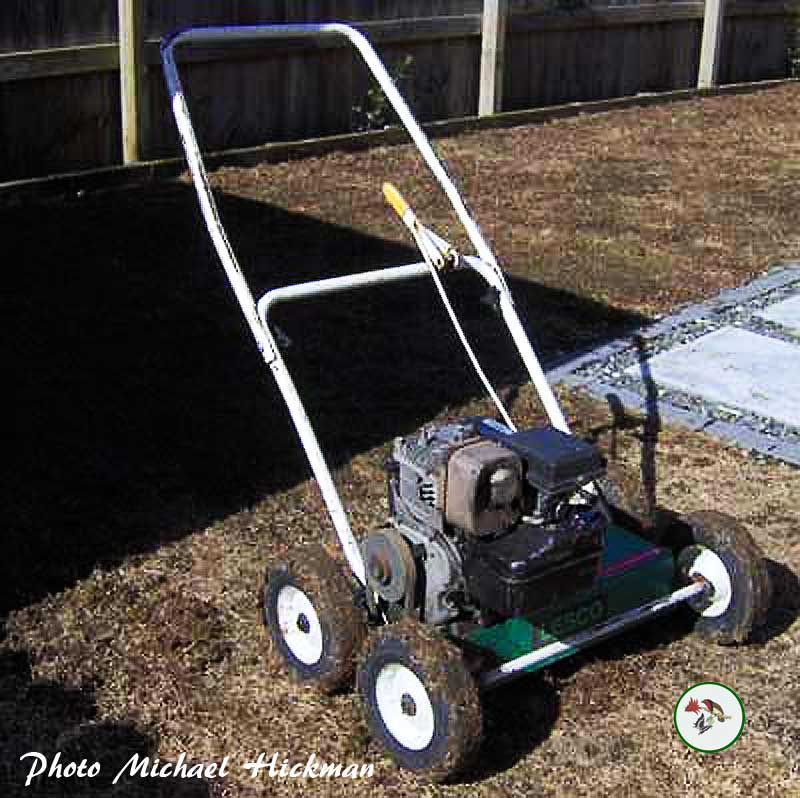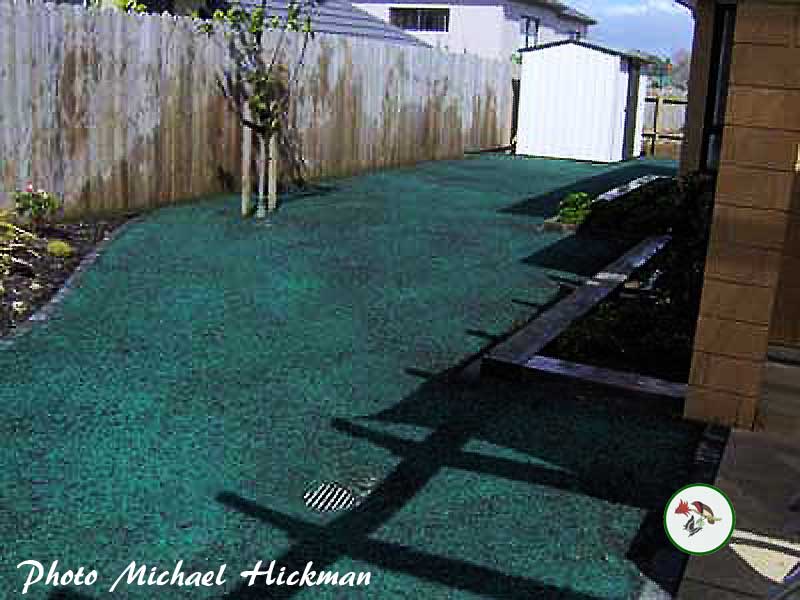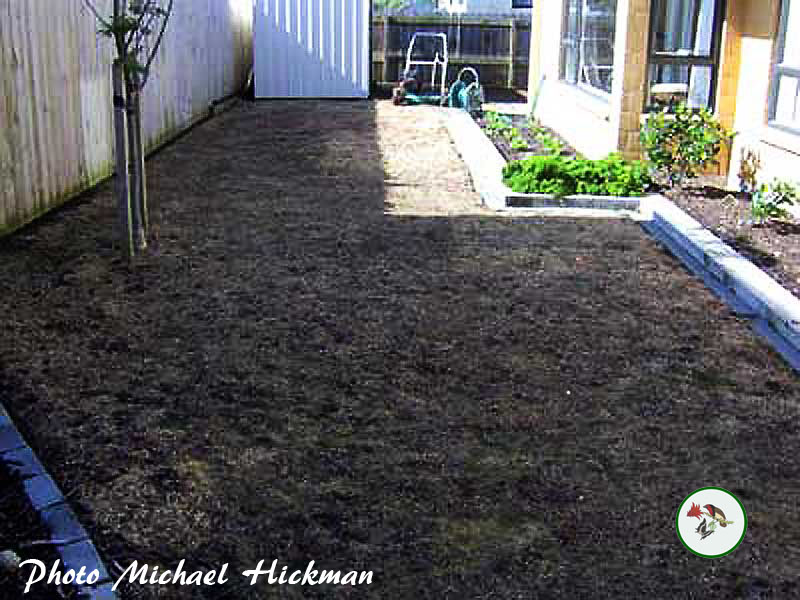 Wir
sind zweisprachig Wir
sind zweisprachig |
 |
Renovation of Lawn
Introduction
This article was written specifically for the management of cool season grasses in Auckland, New zealand, which is warmer than in Germany where I lived for many years and gained most of my experience in managing cool season grasses, but the basic principles apply for both regions.
Investigate and identify the factors that have contributed towards the problem
One of the most important factors to consider before one embarks on such a drastic and costly measure is why the lawn is in the conditions that it is in the first instance. If the factors resulting in the poor condition of the lawn are not clearly identified and rectified then the whole costly exercise will most probably be a total waste of effort and money.
On analysis of the factors that have led to the lawn being in the condition that it is in, one will find a combination of physical and cultural factors which combined caused the problem.
The two most frequent factors are the improper preparation of the area to be planted to lawn and improper management of the lawn.
As regards improper preparation the most common factors that I have observed to be significant in particular on the heavy low fertility clay soils found in many parts of Auckland are.
- The failure to provide adequate drainage.
- The failure to incorporate organic material into the soil.
- The failure to add gypsum and super phosphate to the soils.
- The failure to prepare the seed bed by tilling the soil on which the seed is to be sown.
The most frequent factors encountered as regards the improper management of lawns are.
- Cutting the lawn too short or scalping in many cases right down to the growing point or below.
- The periods between grass cutting are too
long, no more that one third of the leaf blade should be removed at any
one time.
- The failure to fertilize in particular lawns that are under heavy stress due to being cut too short.
- Providing no or insufficient water during hot dry spells.
The process of renovation
The entire area must be sprayed with glyphosate (Roundup) to ensure that all existing grass and weeds are killed off. Some time needs to be allowed to ensure that all the grass and weeds are dead, any areas missed must be re-sprayed.
Any ground modelling, drainage work or the installation of irrigation that is required must be done now.
Thereafter the whole area is to be covered with a layer of suitable organic matter, such as lawn mix from Living Earth to a depth of between 50 mm and 75 mm, an application of super phosphate at the rate of 50-100 grams per square metre and gypsum at the rate of 500- 1000 grams per square metre is also required. The seedbed is then prepared by tilling the entire area with a rotary hoe followed by a light rolling with a roller. The seed bed is then given a final levelling to give a good even surface.
Seeding of the lawn area can be done by means of a rotating disc, drop spreader, or by means of hydromulching. Spreading seed by hand will not give satisfactory results. When seed is spread other than by means of hydromulching the seed would need to be lightly worked into the soil surface with a rake and would need irrigating.
A lawn can be established at any time of the year although the best results are obtained in spring and autumn. The optimum time to establish cool-season turf grasses in the Auckland City area is during the autumn this is when nature establishes cool-season grasses; therefore, the best results with the least amount of work occur at this time. Do not delay seeding or the grass may not establish sufficiently before winter allowing winter growing weeds to become a problem.
Choosing the grass variety to be planted.
In the Auckland area the most frequently planted grass planted in full sun situations is perennial Rye grass. Perennial Rye grass (Lolium perenne) is winter growing, a winter-hardy turf grass capable of withstanding temperature and moisture extremes. During hot, dry periods it tends to become dormant and lose colour. If high quality is desired during the summer period, lawn irrigation is often necessary. Perennial Rye grass performs best in full sun, for shady areas a mixture of perennial Rye and chewings Fescue (Festuca nigrescens) usually give the best results. Bent or common bent (Agrostis capillaris) also known as browntop is to be found in many cool-season grass mixes planted in this region.
Fertilizing, Watering and Mowing
Apply a high nitrogen fertilizer over the lawn and water it in completely, this will not be necessary with hydromulching as the fertilizer is added to the mulch mix. To ensure proper germination you will need to keep the seed moist. This means watering three to four times daily. Light, frequent watering will yield the best results.
Perennial Rye will germinate in approximately 1-3 weeks. Four to five weeks after germination, apply a quick release nitrogen fertilizer at a rate of 30-40g/square metre. Repeat this procedure at four to six weeks intervals until the lawn is fully established, thereafter follow the recognized fertilizing practice for established lawns.
Mow your new cool-season grass as soon as it is 50-70mm tall with the mower set at 50mm. Continue to mow at that height until the lawn is well established, thereafter the cutting height can be lowered gradually to between 25 and 40 mm.
The root system of your new turf will continue to grow and strengthen even if the grass blades have virtually stopped growing for the season. In the spring you will be rewarded with a quick thickening, healthy lawn.
This method employs some of the steps described above but does not give the same results.
The first step is to the kill off the grass as described above.
Once the grass is dead the entire area must be scarified using a motorized verticutter or scarifying machine such as this one shown in the picture.
The area being renovated is then given an application of fertilizer and gypsum, in the case of hydromulching this would be added together in one application with the mulch and seed.


Leveling bar
When employing this simplified method one must realize that you will not achieve the same results as would be achieved if one where to till the soil as indicated above in particular if poor drainage and soil compaction are of significance.

30.10.05
Ecoman Sports Turf and Lawn Expert
I
have considerable experience with establishing
and managing both warm
season as well as cool season grasses which has been gained in
Sports Turf Construction Experience
My
sports turf construction experience includes the
construction of many
sports fields for football, rugby hockey and cricket, golf course
greens,
bowling greens, turf wickets in
Amenity Turf Construction Experience
Most
of my amenity turf construction experience comes from
over 28 years
constructing and maintaining parks and gardens for the Durban Parks
Department,
I also gained valuable experience as a private contractor constructing
parks
and establishing cool season grasses mostly for the North Shore City
Council in
Auckland New
Sports Turf and Amenity Turf Maintenance Experience
Most of my sports turf and amenity turf maintenance experience comes from the maintenance of a large number of parks, sports fields, road verges etc that were under my direct care as a horticulturist then later as a horticultural manager during the 28 years that I was employed by the Durban Parks Department
Domestic lawn Establishment and
Maintenance Experience
My
domestic lawn establishment and maintenance experience has
been
gained on warm season grasses in
For
a number of years I over seeded portions of my own
domestic lawn in
Academic Achievements
Certificate
in Turf
Grass Management
(Cum Laude)
Best Student Turf Grass Management Association 1984
Management of Warm season grasses
Management of cool season grasses
Overseeding
Lawn
Renovation
Preparation
Particular considerations for Auckland New Zealand
Care of Perennial Rye grass lawns
|
|
